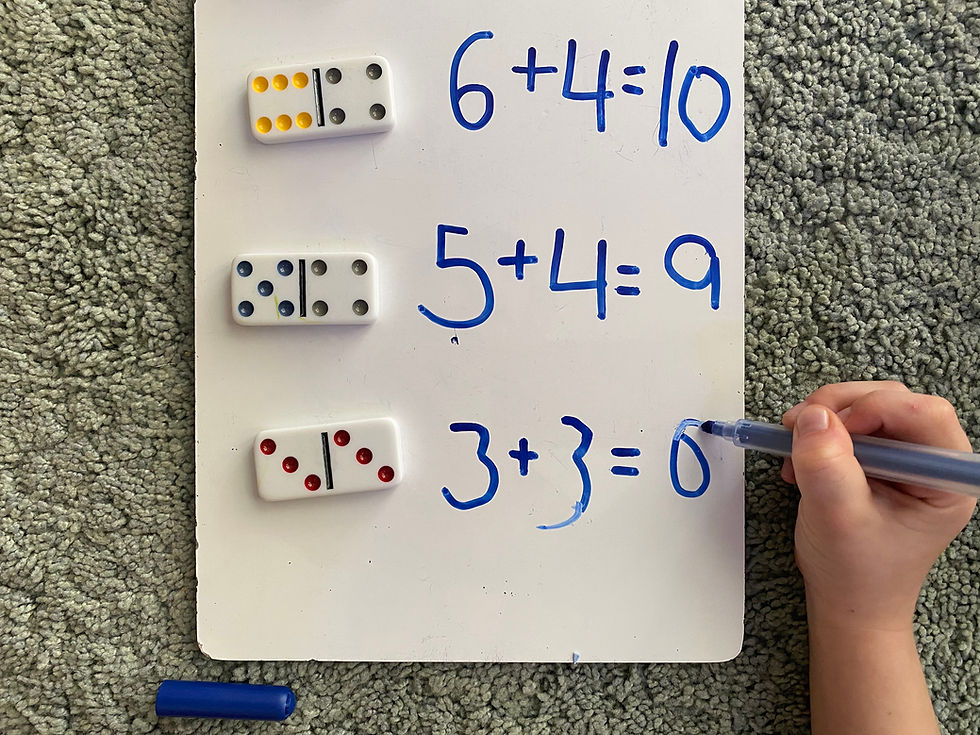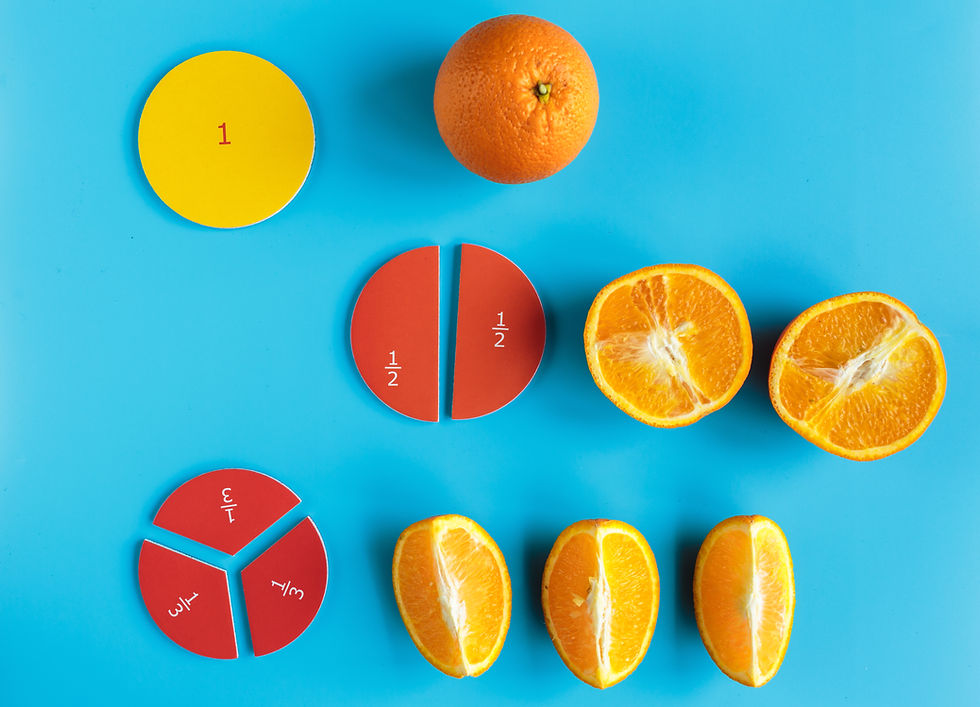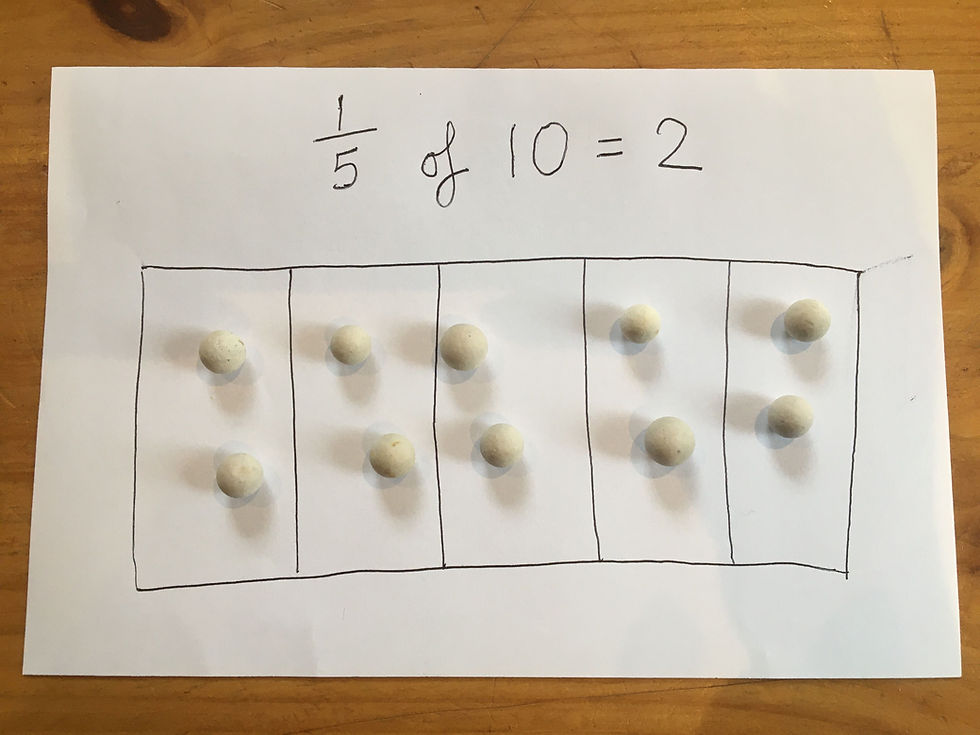Concrete Resources: The Building Blocks To Mathematical Learning
- Titanium Tutors

- Jan 14, 2021
- 4 min read
Updated: Aug 5, 2021
From primary to secondary school, all children can benefit from using objects in Mathematics, whether to consolidate their learning or to understand a concept on a deeper level.

Maths in hindsight
Quick, think of a maths problem! Have you written it down using numbers? Drawn a picture? Used objects? Typically, when one thinks of learning new mathematical concepts, one thinks of a numerical abstract expression: 2 + 2 = 4, for example.
But in actuality, a number needs a picture and, before that, a physical object, to give pupils a deeper understanding. This also underpins the key framework of the CPA (concrete, pictorial, abstract) approach, used in many schools.
CPA approach and Maths mastery
Concrete resources are objects that pupils can touch and manipulate. Rather than just being mere ‘toys’ or something ‘fun’ to take the edge off ‘real’ Maths, concrete or physical resources are tools pupils use to help make real world connections and clarify misunderstandings.
Being able to not only solve but show how 2+2=4, in different ways, fosters and demonstrates Maths mastery – a deep and lasting understanding of mathematical concepts.
Parents and physical manipulatives
“One of the biggest barriers to learning is that children do not understand the abstract world of mathematics. Some children have learnt by heart mathematical rules, but they do not understand what they mean, and therefore cannot apply these rules to problem solving and reasoning questions.” Equals, Summer 2018
Using concrete resources re-engages disaffected learners and sheds a new perspective on abstract mathematical concepts. If your child is a SEN (Special Educational Needs) or EAL (English as an Additional Language) learner, they might ‘tune out’ auditory instructions.
Therefore, using a hands-on and tactical method can give those that struggle a means to cross the abstract barrier to learning Maths. Similarly, if your child seeks to further their understanding, concrete objects are an invaluable resource.

How to make and use physical resources
Free, DIY and purchasable ideas
What kinds of concrete resources can we explore, not only in a typical classroom setting, but at home and tutoring as well?
There is a plethora of manipulatives at our immediate disposal: from paper money and buttons to dienes blocks and a simple piece of paper. Let’s explore a few that you can purchase or make for free at home or during your next lesson.
Place Value
Purchasable: Dienes/base-ten number blocks
Free: Bundles of straws or sticks (to represent place value)
Paper money and coins (to represent exchange in place value)
Fractions
Purchasable: Fraction discs and sets
Free: Strips of paper (to fold and explore fraction equivalence)
Paper plate (to draw, cut and represent fractions)
Objects to use as counters like buttons (to explore fractions of amounts)
Fruit or objects to cut and split (to explore fractions of a whole)

Multiplication/Division
Purchasable: Multilink cubes
Free: Lego (to group numbers to multiply/divide)
Geometry
Purchasable: 2-D/3-D shape sets
Free: Printable 3-D nets (to make and explore shape recognition)
Toothpicks, marshmallows or Blu Tack (to create 3-D shapes and explore vertices/corners)

Using concrete resources with older year groups
Though concrete resources are most commonly used in a KS1 and KS2 setting, pupils in KS3 and beyond can benefit from their use as well. If a pupil doesn’t understand one area of Maths (like fractions), this can have a domino effect on other areas of Maths as they progress.
After all, a good foundation ensures a better grasp of basic concepts and builds on what they’ve learned in the earlier years. Let's have a look at the following as an example:
Fractions of an amount
A simple KS2 question involving ‘fractions of an amount’ could be:
What is 1/5 of 10?
Using physical resources, we can solve this as:

In older year groups like KS3, this can be developed as:
What is 1/8 of 7.2?
Building on the concrete representation used previously, we also know to group 72 in groups of 8 which means 72 ÷ 8 = 9.
Using our place value knowledge, it can also be said that 7.2 ÷ 8 = 0.9
When this is represented as a fraction, we then know 1/8 of 7.2 = 0.9
Tutors: to use or not use concrete resources?
As one of our Maths tutors mentioned in this festive Maths article:
I’m continually astonished by the way examples drawn from life help struggling students to do calculations that they believe are beyond them.
Using concrete resources and ideas from real life helps consolidate pupil learning and makes the lesson more fun and engaging.
Concrete resources bridge gaps for students that struggle with Maths, yet provide the opportunity for advanced mathematical exploration.
During this digital age, it is doubly important for children to feel and touch what they are learning and apply that to contexts they will encounter in the real world.

Blog Post Crafted by Cheryl
Cheryl works on our Admin Team, and is a qualified teacher with 5 years' experience in schools across England and Canada.
Cheryl graduated from McMaster University with an Honours Bachelor of Commerce and a Minor in English, and from University of Toronto with a Bachelor of Education, with a specialisation in Aboriginal Studies. She tutored secondary school students in English for over nine years in Canada.
Cheryl speaks Cantonese, English and French, and in her spare time, she can be found illustrating and reading children’s books for inspiration.








Comments